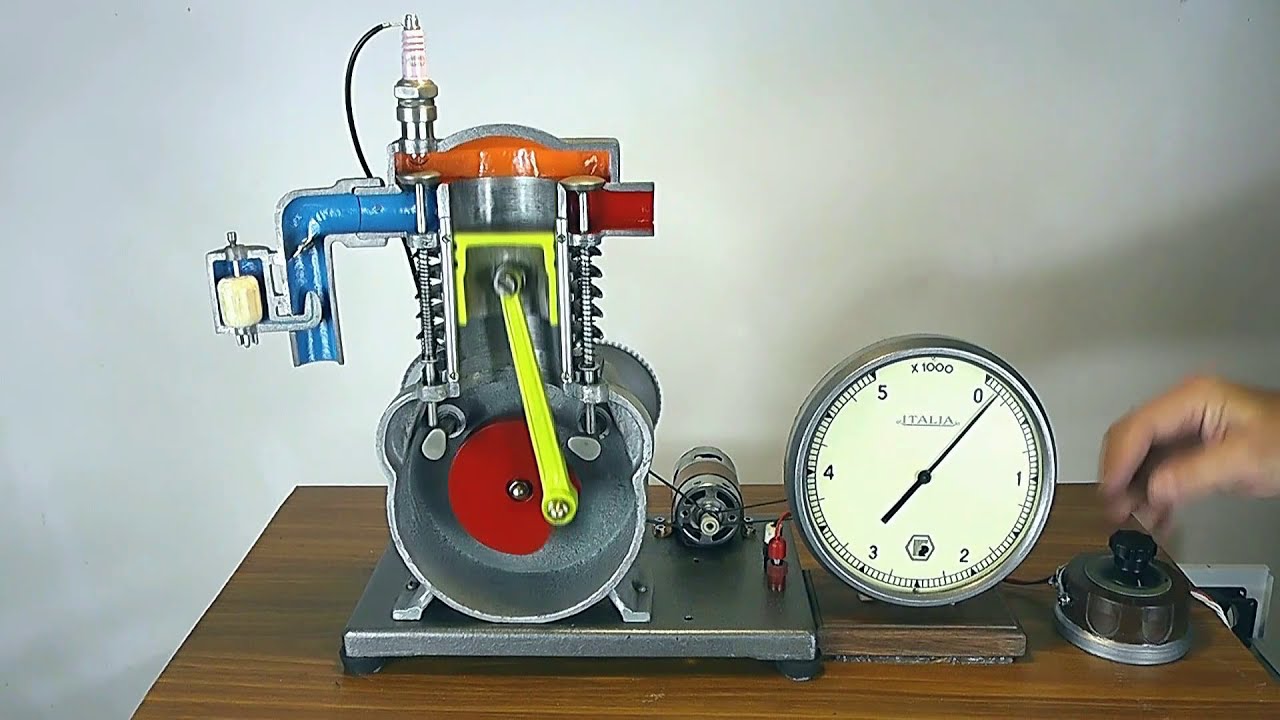In a gasoline engine, the motion of the piston is simple harmonic. The piston has a mass of 2 kg and stroke (twice the amplitude) of 10 cm. find maximum acceleration and the maximum unbalanced force on the piston, if it is making 50 complete vibrations each minute.
Given angular velocity of an engine crankshaft, calculate velocity and acceleration of the piston (linear) and connecting rod (angular) using the general planar motion formulas for rigid body kinematics.
9702/41/M/J/20: The piston in the cylinder of a car engine moves in the cylinder with simple harmonic motion. The piston moves between a position of maximum height in the cylinder to a position of minimum height, as illustrated in Fig. 3.1.
The distance moved by the piston between the positions shown in Fig. 3.1 is 9.8 cm. The mass of the piston is 640 g. At one particular speed of the engine, the piston completes 2700 oscillations in 1.0 minute.
(a) For the oscillations of the piston in the cylinder, determine (i) the amplitude, (ii) the frequency, (iii) the maximum speed, (iv) the speed when the top of the piston is 2.3 cm below its maximum height.
(b) The acceleration of the piston varies. Determine the resultant force on the piston that gives rise to its maximum acceleration.
In a gasoline engine, the motion of the piston is simple harmonic. The piston has a mass of 2 kg and stroke (twice the amplitude) of 10 cm. find maximum acceleration and the maximum unbalanced force on the piston, if it is making 50 complete vibrations each minute.
Given angular velocity of an engine crankshaft, calculate velocity and acceleration of the piston (linear) and connecting rod (angular) using the general planar motion formulas for rigid body kinematics.
9702/41/M/J/20: The piston in the cylinder of a car engine moves in the cylinder with simple harmonic motion. The piston moves between a position of maximum height in the cylinder to a position of minimum height, as illustrated in Fig. 3.1.
The distance moved by the piston between the positions shown in Fig. 3.1 is 9.8 cm. The mass of the piston is 640 g. At one particular speed of the engine, the piston completes 2700 oscillations in 1.0 minute.
(a) For the oscillations of the piston in the cylinder, determine (i) the amplitude, (ii) the frequency, (iii) the maximum speed, (iv) the speed when the top of the piston is 2.3 cm below its maximum height.
(b) The acceleration of the piston varies. Determine the resultant force on the piston that gives rise to its maximum acceleration.
























No comments:
Post a Comment